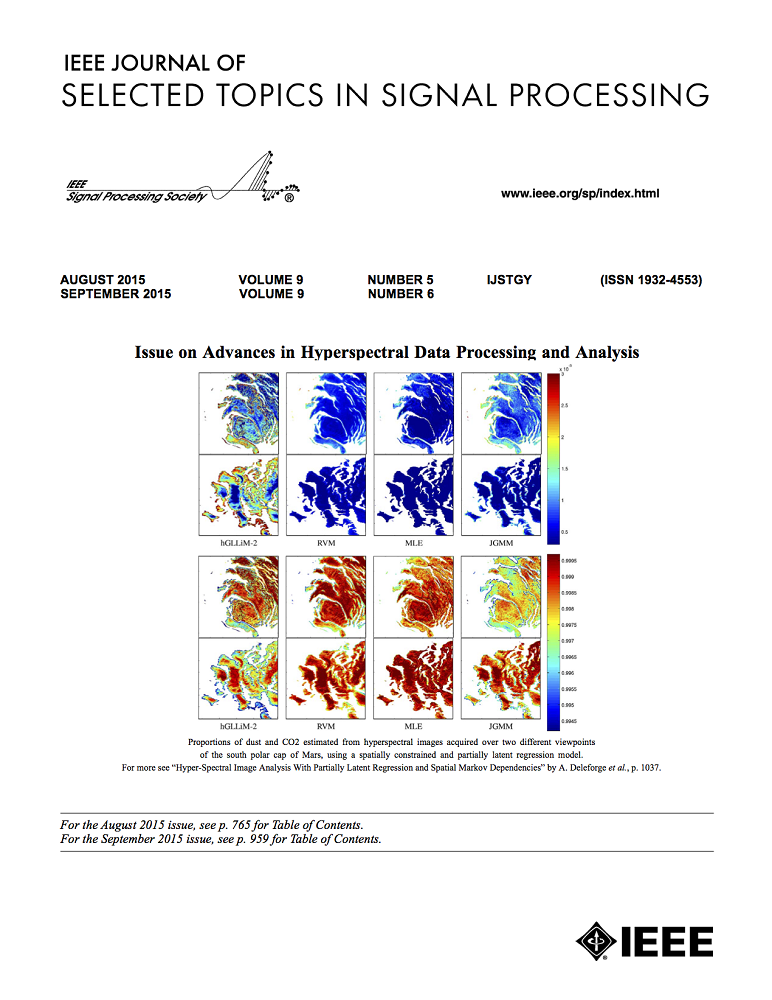Optimizations of Neural Audio Coder Toward Perceptual Transparency
IF 8.7
1区 工程技术
Q1 ENGINEERING, ELECTRICAL & ELECTRONIC
IEEE Journal of Selected Topics in Signal Processing
Pub Date : 2024-08-22
DOI:10.1109/JSTSP.2024.3437155
引用次数: 0
Abstract
This paper presents comprehensive optimizations of a neural audio coder built upon a variational autoencoder (VAE) system integrated with an arithmetic coder. Our optimizations focus on two primary aspects: a novel loss function design and advanced entropy modeling of bottleneck latent embeddings. The loss function design incorporates parameters from a psychoacoustic model (PAM) into the frame-wise distortion measure, providing excellent perceptual quality. In addition, a multi-time scale discriminator is utilized to minimize distortions across adjacent frames, reducing artifacts at frame edges. Also, the coder is optimized considering three sophisticated entropy models within the latent domain: the Factorized Entropy Model (FEM), the Hyperprior Model (HPM), and the Joint Hierarchical Model (JHM). Notably, the JHM enhances context modeling across frames to effectively predict components influenced by long-term dependencies. To verify the optimization performance, we conducted extensive experiments using a dataset consisting of commercial movie clips and two additional public datasets. Objective metrics consistently demonstrated that our optimized loss function and latent modeling achieved superior performance across all test datasets compared to traditional codecs such as LAME-MP3 and FDK-AAC. Subjective assessments also indicated that our system could offer comparable or superior auditory quality to FDK-AAC.面向感知透明性的神经音频编码器优化
本文提出了一种基于变分自编码器(VAE)系统和算术编码器的神经音频编码器的综合优化方案。我们的优化主要集中在两个方面:一种新的损失函数设计和瓶颈潜在嵌入的先进熵建模。损失函数设计将心理声学模型(PAM)的参数整合到逐帧失真测量中,提供了出色的感知质量。此外,利用多时间尺度鉴别器来最小化相邻帧之间的失真,减少帧边缘的伪影。此外,还考虑了潜在域中三种复杂的熵模型:分解熵模型(FEM)、超先验模型(HPM)和联合层次模型(JHM),对编码器进行了优化。值得注意的是,JHM增强了跨框架的上下文建模,以有效地预测受长期依赖关系影响的组件。为了验证优化性能,我们使用由商业电影剪辑和两个额外的公共数据集组成的数据集进行了广泛的实验。客观指标一致表明,与传统的编解码器(如LAME-MP3和FDK-AAC)相比,我们优化的损失函数和潜在建模在所有测试数据集上都取得了卓越的性能。主观评价也表明我们的系统可以提供与FDK-AAC相当或更好的听觉质量。
本文章由计算机程序翻译,如有差异,请以英文原文为准。
求助全文
约1分钟内获得全文
求助全文
来源期刊

IEEE Journal of Selected Topics in Signal Processing
工程技术-工程:电子与电气
CiteScore
19.00
自引率
1.30%
发文量
135
审稿时长
3 months
期刊介绍:
The IEEE Journal of Selected Topics in Signal Processing (JSTSP) focuses on the Field of Interest of the IEEE Signal Processing Society, which encompasses the theory and application of various signal processing techniques. These techniques include filtering, coding, transmitting, estimating, detecting, analyzing, recognizing, synthesizing, recording, and reproducing signals using digital or analog devices. The term "signal" covers a wide range of data types, including audio, video, speech, image, communication, geophysical, sonar, radar, medical, musical, and others.
The journal format allows for in-depth exploration of signal processing topics, enabling the Society to cover both established and emerging areas. This includes interdisciplinary fields such as biomedical engineering and language processing, as well as areas not traditionally associated with engineering.
 求助内容:
求助内容: 应助结果提醒方式:
应助结果提醒方式:


